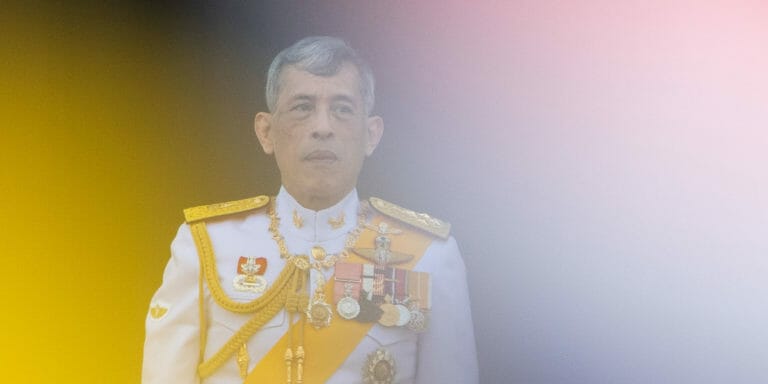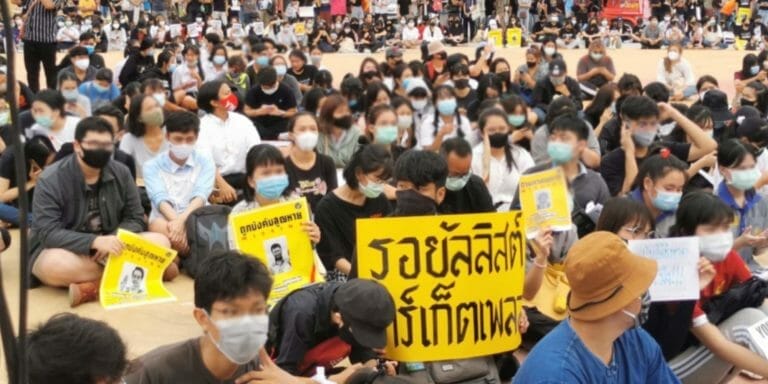“We are not dust. We are human beings. People or king, we are all the same human beings”, said Panassaya Sitthijirawattanakun, a protest leader.
She gave this passionate speech on the stage at Sanam Luang, a Bangkok square adjacent to the majestic Grand Palace of Thailand. The last weekend protest, from 19-20 September, was primarily organised to commemorate the coup of September 19, 2006 that overthrew the elected government of Thaksin Shinawatra. They were there not just to shame the coup, however. They also wanted to reform the monarchy – a long-held taboo in the Land of Smiles.
‘Our first dictatorship is school’: Thai kids revolt
As university students stage weeks of campus protests for democracy, their younger brethren – high school students – are advancing their own rebellion to Thailand’s establishment.https://t.co/nZGQObRD1P by @Juarawee— The Asian Feminist (@theasianfmnst) October 1, 2020
The demand for immediate monarchical reform is now an official objective of the protesters
Given the immense power of the monarchy, built upon its intricate ties with the military, buttressed by wealthy conglomerates and supported by affluent middle class in Bangkok, such objective is indeed an arduous task, if not very dangerous.
Panassaya said, “It is time to put the monarchy back in the constitution. This is not pushing up the ceiling, but we are removing the entire roof”. Her message was meant to unlock the limit of the discussion on the monarchy, which is somewhat still protected under the archaic lèse-majesté law. The large crowd stood up and raised their three fingers in a Hunger Games’ fashion to reject the “royal absolutism”. It was estimated that between 100,000-300,000 people participated in the rally in the pouring monsoon rain.
At 6am on Sunday, the student leaders woke up the protesters to join a significant ceremony, that of embedding a new plaque onto the surface of Sanam Luang. The original plague was made by khanarasadon or the People’s Party, a group of revolutionists who abolished the absolute monarchy in Siam in 1932. They decorated the Royal Plaza with a plaque declaring the victory of the people over the ancient regime. But it mysteriously vanished in 2017 shortly after the ascendance to the throne of King Vajiralongkorn. So, the new plaque symbolizes the reclaim of the people’s political rights in the face of the uncontrollable royal power.
Initially the student leaders planed to move the crowd to the Government House to hand over a letter demanding the monarchical reform. But they instead decided to pass on the letter to General Surayud Chulanond, President of the Privy Council, an advisory body to the king. Surayud was a former prime minister, trusted by the late king Bhumibol Adulyadej, hence an important ally of the monarchy. The showdown took place in front of the Privy Council Office, as Panassaya, assigned as an envoy to deliver the letter, they were obstructed by hundreds of police. For a brief moment, many feared that it could lead to violent confrontation. Eventually, a high-ranking police officer, as a representative, agreed to take the letter to deliver to Surayud, resulting in the end of the protest.

The occupation of Sanam Luang by the demonstrators on 19 September 2020. Photo by Milktea2020 Wikipedia Commons
Where will the protest go from here?
Parit Chiwarak, another student leaders, called for another protest on October 14; this time the date coincides with the massacre of Thammasat students in 1973.
Meanwhile, he suggested a number of sanctions over the prevailing royal symbols in everyday life. For example, he suggested a general strike on October 14, and asked the crowd to raise the three fingers every time they’re forced to listen to the national anthem, to blow the horn when they are stuck in traffic because of the royal motorcade, and to withdraw money from the Siam Commercial Bank, deemed as a source of royal wealth long monopolising banking in Thailand.
The protests rushed to celebrate their success in putting forward royal reform in the public space. It is true that their demands expressed so publicly are an impressive achievement. But as long as Vajiralongkorn continues to ignore the call, the aims of the protest are only half met. Certainly, the early impact on the society has been the growing awareness of the politicization of the monarchy. Yet, the long-term consequence of this political activism on the future of the monarchy is still pretty much unknown. What is better known now is that the protest will continue in the next coming months.
The next protest on 14 October will take place just a day after the memorial ceremony of the passing of King Bhumibol Adulyadej, on 13 October 2016. Therefore, in some ways, the protest will combine the two events in order to get the message of the students across in regards to the need to reform the royal institution.
Bhumibol’s political legacy is still in place today, some of which must be dismantled if democracy might one day take root.
Pavin Chachavpongpun
Banner Image: September 5, 2020. Bangkok, Thailand. Many high school students gathered in front of the Ministry of Education and gave speeches to criticize Thai education and dictatorship regime of the Thai government. Photo: kan Sangtong / Shutterstock.com





